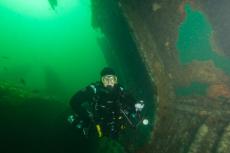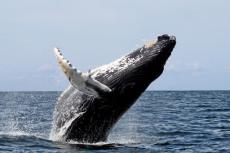Is New York Bight now a supplementary feeding site for baleen whales?
Baleen whales have been spotted more frequently in the waters off New York and New Jersey.
An increased presence of baleen whale species has been observed in the waters off New York and New Jersey, suggesting that they may be using the area as a supplementary feeding ground.
In boat surveys conducted from 2017 to 2019, scientists from the Wildlife Conservation Society (WCS) and Columbia University observed humpback, fin and minke whales foraging in the New York Bight. A paper on their findings was published in the Marine Biology Research journal.
Alongside common dolphins and seabirds, the whales fed mainly on schools of sand lance about 10 to 60 kilometers from shore. In the nearshore waters less than 10 kilometers from shore, they were more dispersed and fed mostly on Atlantic menhaden.
Besides foraging, the whales were also seen resting, traveling and socialising.
“Considering the high prevalence of foraging behavior documented in the study, it is more likely that changing prey availability and/or oceanographic conditions have led to some recent shifts in whale distribution and greater habitat utilization in coastal waters of the New York Bight," said one of the study’s co-lead authors Carissa King of WCS's Ocean Giants Program.
Unfortunately, the whales tended to feed in areas with high recreational boating activity and shipping lines, thus opening up the possibilities of vessel strikes and accidents. Evidence of such incidents was evident in the presence of healing or healed propeller wounds, missing dorsal fins or portion of the fluke.
Another issue is the whales’ exposure to increased noise levels, which could have behavioral and physiological impacts, and may affect communication amongst the whales.
This new information is particularly important given the current and potential pressures facing whales within the New York Bight. Hopefully our data now illustrate the need for better practices and effective mitigation in this urbanized region," said co-author Howard C. Rosenbaum, Director of WCS's Ocean Giants Program.


































